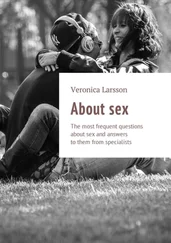Mariana Mazzucato - The Value of Everything - Making and Taking in the Global Economy
Здесь есть возможность читать онлайн «Mariana Mazzucato - The Value of Everything - Making and Taking in the Global Economy» весь текст электронной книги совершенно бесплатно (целиком полную версию без сокращений). В некоторых случаях можно слушать аудио, скачать через торрент в формате fb2 и присутствует краткое содержание. Год выпуска: 2018, ISBN: 2018, Издательство: Penguin Books Ltd, Жанр: economics, на английском языке. Описание произведения, (предисловие) а так же отзывы посетителей доступны на портале библиотеки ЛибКат.
- Название:The Value of Everything: Making and Taking in the Global Economy
- Автор:
- Издательство:Penguin Books Ltd
- Жанр:
- Год:2018
- ISBN:9780241188828
- Рейтинг книги:3 / 5. Голосов: 1
-
Избранное:Добавить в избранное
- Отзывы:
-
Ваша оценка:
- 60
- 1
- 2
- 3
- 4
- 5
The Value of Everything: Making and Taking in the Global Economy: краткое содержание, описание и аннотация
Предлагаем к чтению аннотацию, описание, краткое содержание или предисловие (зависит от того, что написал сам автор книги «The Value of Everything: Making and Taking in the Global Economy»). Если вы не нашли необходимую информацию о книге — напишите в комментариях, мы постараемся отыскать её.
The Value of Everything: Making and Taking in the Global Economy — читать онлайн бесплатно полную книгу (весь текст) целиком
Ниже представлен текст книги, разбитый по страницам. Система сохранения места последней прочитанной страницы, позволяет с удобством читать онлайн бесплатно книгу «The Value of Everything: Making and Taking in the Global Economy», без необходимости каждый раз заново искать на чём Вы остановились. Поставьте закладку, и сможете в любой момент перейти на страницу, на которой закончили чтение.
Интервал:
Закладка:
This approach has a very important consequence. It suggests that government should never intervene in the economy unless there are market failures. Market failure theory uses the first fundamental theorem (FFT) of welfare economics as its starting point. The FFT holds that markets are the most efficient allocators of resources under three specific conditions: first, that there exists a complete set of markets, so that all goods and services which are demanded and supplied are traded at publicly known prices; that all consumers and producers behave competitively; and that an equilibrium exists.
Violations of any of these three assumptions leads to the inefficient allocation of resources by markets, or what marginalists term ‘market failures’. Market failures might arise when there are ‘positive externalities’, benefits to society such as basic science research from which it is hard for individual firms to profit; or ‘negative externalities’, bad things like pollution, which harm society but are not included in firms’ costs. If markets are not ‘Pareto-optimal’, then everyone could be better off as a result of public policies that correct the market failure in question. 14However, as we will see in Chapter 8, a body of economics referred to as Public Choice theory, advocated by Nobel Prize winner James Buchanan (1919–2013), later argued that as government failures are even worse than market failures (due to corruption and capture), so the correction of market failures by bureaucrats might make things even worse.
From the Class Struggle to Profits and Wages in ‘Equilibrium’
Defining everything that commands a price as valuable led to the marginalists’ conclusion that what you get is what you are worth. Profits are not determined by exploitation but by technology and the ‘marginal product of capital’. Capital and labour are seen as the two main inputs into production, and so just as labour earns wages for its productive contribution (marginal product of labour), capital earns a profit (marginal product of capital). John Bates Clark (1847–1938), a former critic of capitalism who converted to become one of the most ardent contributors to the marginalist revolution, argued strongly against the idea that labour was exploited. Capital could not exploit labour, he reasoned, because labour and capital were simply earning their ‘just rewards’ – their marginal products. In Clark’s view, capital goods themselves were the rewards for capitalist self-restraint. Instead of consuming their profits, they had saved them – saving that would eventually result in higher investment in more capital goods (we will come back to this in Chapter 8).
The equilibrium view diverted attention from the tensions between capital and labour, and ultimately from alternative theories on the sources and distribution of value – which almost faded into oblivion from the late nineteenth century onwards, except in expressly Marxist circles and in the thinking of economists such as Joan Robinson (1903–1983), Professor of Economics at Cambridge, and Piero Sraffa (1898–1983), an Italian who also studied and worked in Cambridge. Both were dedicated critics of the neoclassical view of production, believing that the concept of the ‘marginal’ product of labour and capital was ideologically based, and was also subject to a ‘fallacy of composition’: the neoclassical theory of production could not apply to the entire system. They engaged actively in what was later called the Cambridge Capital Critique – a debate between the Cambridge, UK-based Robinson and Sraffa, and Solow and Samuelson, who were at MIT in Cambridge, Massachusetts.
Sraffa and Robinson argued that ‘capital’ is heterogeneous and so cannot be used as an aggregate concept. That is, it cannot be aggregated since it would be like adding apples to oranges. In 1952 Robinson, influenced by the writings of Sraffa, argued that the idea of profits as the value measurement of capital is a tautology: there is no way to know the value of capital without knowledge of equilibrium prices, and these require an equilibrium rate of profit that cannot be obtained unless we have estimated the value of capital. Furthermore, following the ideas of Marx, Robinson and Sraffa argued that the rate of profit was not the reward for productive contribution of ‘capital’; it derived from social relations, that’s to say, who owned the means of production and who was forced to work for them. The circularity of the logic of neoclassical theory was partly accepted by Samuelson in a well-known 1966 article in the prestigious Quarterly Journal of Economics , where he admitted the logical validity of the points being made by Robinson and Sraffa. Solow, on the other hand, claimed that neoclassical economics should not be distracted by such critiques; and indeed, the debate between the ‘classicals’ and the ‘neoclassicals’ would later disappear, so that most students of economics today don’t even know it happened.
Remarkably, the neoclassical theory of value has not changed much in the last hundred years. The maximization of utility has been extended beyond the economic sphere to explain human behaviour, including crime, drug addiction and, infamously, models of divorce. This particular idea originated with Gary Becker (1930–2014), an American who was Professor of Economics and Sociology at the University of Chicago and won the Nobel Prize in Economics in 1992. In essence, Becker postulated that two individuals marry when there is a positive surplus from their union in contrast to remaining single. These gains may come from, for example, economies of scale, provision of insurance and general risk-sharing. Becker’s ideas encouraged many others to pursue similar investigations.
Attempts have also been made to forge stronger links between macroeconomic patterns (the whole economy, for instance inflation, unemployment and business cycles) and microeconomic decisions made by people and firms. And, as we will see, other work has looked at the need to include non-priced goods (such as care) into GDP.
But despite the critiques, marginal utility theory prevails and is highly influential. The narrow equilibrium view that we will all benefit from perfect competition has influenced – and continues to influence – government policies and those of powerful multilateral bodies such as the International Monetary Fund and the World Bank: how, with perfect competition, individuals will supposedly maximize their preferences and companies their profits so we will all benefit. On the basis of contemporary economic assumptions, we can no longer reliably say who creates value and who extracts it and therefore how the proceeds of production – income – should reasonably be distributed. In the next chapter we will see how this subjective approach to value has also had a strong impact on the ways we measure national wealth and income through the concept of GDP.
THE DISAPPEARANCE OF RENT AND WHY IT MATTERS
When students learn about microeconomics in the classroom (e.g. how prices are determined, including wages), they are not told that this is only one of many different approaches to thinking about value. It is, as far as they are concerned, the only one – and, as a result, there is no need to refer to the word ‘value’. The term essentially disappears from the discourse. It is simply Microeconomics 101.
In concluding our history of economic thought, we should ask: is this only an academic exercise, or does it matter? Why it does matter is the subject of this book: it is crucial to our understanding of value extraction – and hence the ability to limit it.
The concept of ‘rent’ has changed in economic thought over the centuries, because rent is the principal means by which value is extracted. The eighteenth-century economists described rent as unearned income, which they thought of as income derived from simply moving existing resources from one hand to another. Their disapproval of unearned income partly came, as we have seen, from medieval strictures on usury – the charging of interest. But it was also practical. Adam Smith believed that a genuinely free market was a market free of rent, and so policymakers had to do their best to eliminate it. His follower David Ricardo considered landowners who collected rent without contributing to the productivity of land to be economic parasites; he denied vehemently that there was any value in the income or rent received from owning land. Rents were unearned income and fell squarely outside the production boundary. Both Smith and Ricardo realized that freeing the economy from rent called for strong intervention – in practice by government – to prevent value extraction. Neoclassical economists too; they see rent as an impediment to ‘free competition’ (free entry and exit of different types of producers and consumers). Once those impediments are removed, competition will benefit everyone.
Читать дальшеИнтервал:
Закладка:
Похожие книги на «The Value of Everything: Making and Taking in the Global Economy»
Представляем Вашему вниманию похожие книги на «The Value of Everything: Making and Taking in the Global Economy» списком для выбора. Мы отобрали схожую по названию и смыслу литературу в надежде предоставить читателям больше вариантов отыскать новые, интересные, ещё непрочитанные произведения.
Обсуждение, отзывы о книге «The Value of Everything: Making and Taking in the Global Economy» и просто собственные мнения читателей. Оставьте ваши комментарии, напишите, что Вы думаете о произведении, его смысле или главных героях. Укажите что конкретно понравилось, а что нет, и почему Вы так считаете.












![John Bruce - The Lettsomian Lectures on Diseases and Disorders of the Heart and Arteries in Middle and Advanced Life [1900-1901]](/books/749387/john-bruce-the-lettsomian-lectures-on-diseases-and-disorders-of-the-heart-and-arteries-in-middle-and-advanced-life-1900-1901-thumb.webp)